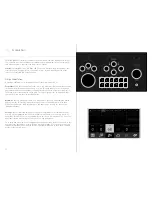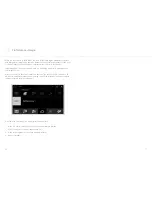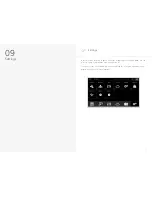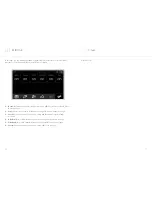
48
49
Animator
The Animator is basically another Sequencer for parameters, but it’s triggered by notes: if
enabled, each note retriggers the animation when pressed.
Also, exactly as in the normal Sequencer, you can have 12 rows running simultaneously and
they can control almost any parameter available in the 008R.
This makes the Animator a very powerful and flexible modulation source.
The main Animator page is very similar to the related Sequencer page, with the only
differences being:
•
there are no Gate Length and Velocity rows (as you would expect);
•
being a modulation source for parameters only, you can’t add a note row.
Legato:
on parameter rows, each step has an inner little box on its bottom-right corner with
a letter ‘L’, which stands for ‘legato’. If Legato is on, the parameter will slew to the next step
value allowing you to create a smooth transition between steps.
Please, refer to the Sequencer section (see above) for a detailed description of all the
parameters.
Animator setup
Also the Setup sub-menu page looks exactly the same as the Sequencer’s one with the
additon of a Relative/Absolute mode:
Once enabled, the Animator will take ‘relative’ control of the assigned parameters by default.
This means that the current parameters value is offset by the current step value. In ‘absolute’
mode the current step value will overide the current parameters value.
It is important to understand that (unlike sequences) animations are linked to patches.
The Animator is intended as a real modulation source ‘built into’ the patch, so its settings
(including Status) are automatically recalled every time you load a new patch (exactly as e.g.
LFOs or Velocity modulations).
Please note that when you save a patch you save only the link to the animation’s slot, not the
animation itself (this because you may want to save the edited animation to a different slot, as
the same animation can be used by different patches).
As in the Sequencer, as soon as you load a new Animation, the Status automatically turns on.
Please note that both the Sequencer and the Arpeggiator ‘trigger’ the Animator: this means
that each repeated step will be ‘animated’ (provided that you have long enough Step Length
and Gate Length values).
This can lead to very complex modulations, good to design nice evolving pads and highly
textured ambient sounds.











































